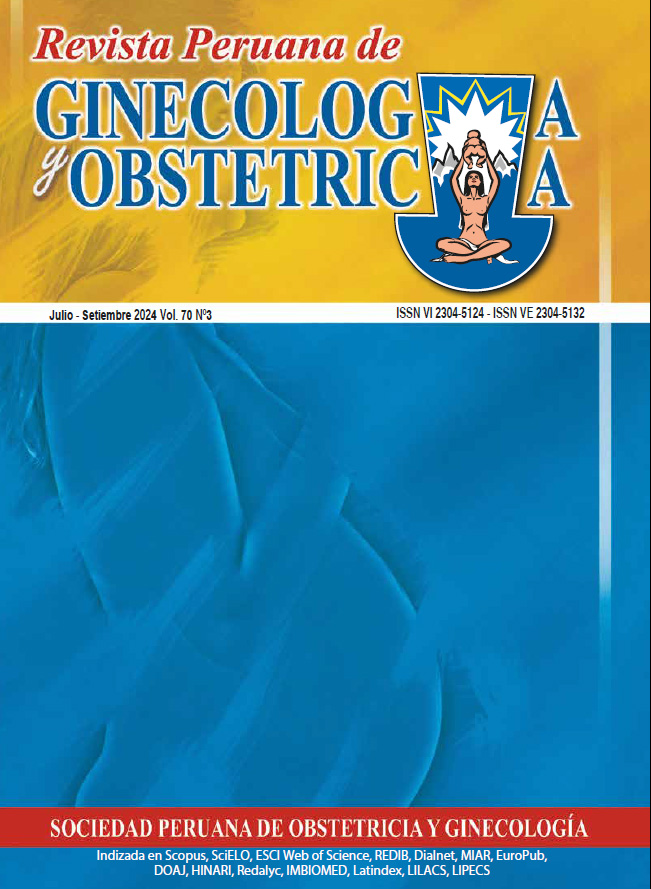Risk factors for hyperemesis gravidarum in the Peruvian maternal-perinatal institute
DOI:
https://doi.org/10.31403/rpgo.v70i2659Keywords:
Risk factors, Hyperemesis gravidarum, PregnancyAbstract
Introduction: Hyperemesis gravidarum (HG) is a disorder of pregnancy characterized
by severe nausea and vomiting that can lead to serious complications. It affects
approximately 0.5%-2% of pregnant women globally, being more common in multiple
pregnancies and in young women. Objective: To identify the risk factors associated
with hyperemesis gravidarum in women attended at the Instituto Nacional Materno
Perinatal in Lima, Peru, during the year 2022. Materials and Methods: A case-
control study including 126 pregnant women (63 cases with HG and 63 controls)
was performed. Data collected on factors associated with hyperemesis gravidarum
such as extreme maternal age, higher education level, maternal obesity, maternal
hCG concentrations in the first trimester, parity, multiple pregnancy, female fetus,
history of mental illness, hyperthyroidism and hydatidiform mole were analyzed.
Logistic regression was used to avoid confounding variables. Results: Multivariate
analysis adjusted for possible confounding variables indicated that higher education
level was a protective factor for hyperemesis gravidarum but was not statistically
significant. In contrast, maternal obesity, high hCG concentrations during the first
trimester, nulliparity, and having a female fetus were factors that increased the risk
of hyperemesis gravidarum and were statistically significant. Conclusion: The study
found that maternal obesity, high hCG concentrations, nulliparity, and gestation of a
female fetus were significant risk factors for hyperemesis gravidarum, while a higher
education level could be a protective factor, though not a significant one.
Downloads
Downloads
Published
How to Cite
Issue
Section
License
Copyright (c) 2024 Gianina Jesús Ángeles-Olaza, Cristina Nataly García-Borjas, Miguel Ángel Arce-Huamaní

This work is licensed under a Creative Commons Attribution 4.0 International License.
Esta revista provee acceso libre inmediato a su contenido bajo el principio de que hacer disponible gratuitamente la investigación al publico, lo cual fomenta un mayor intercambio de conocimiento global.















